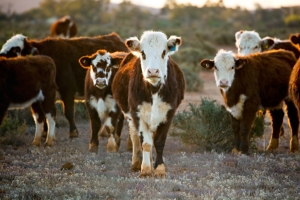Don’t be in a hurry when calf pulling

By Anthony Gallenti, owner of Farmer’s Mailbox. Calf pulling is a useful skill to have. Ideally most of your cattle will give birth without the need of assistance, but if any of your cattle need assistance - calf pulling at the right time can save the life of the calf and future health of the cow.
Dystocia is the term used when a cow is unable to deliver a calf by herself .[i] Some causes of dystocia are:
- Abnormalities of presentation, position and posture.
- The foetus is a normal size but too large in relation to the size of the cow's pelvis.
- Oversized foetus. The cow's pelvis is a normal size but the calf is over-developed.
- Torsion of the uterus. The uterus is twisted on its long axis (the twist can be felt in the wall of the vagina, which is reduced in size).
- Uterine inertia, which occurs when the uterine muscles do not contract as vigorously as they should; the cervix fails to open to its fullest extent and the calf cannot be expelled.
- Monstrosities. Many types of developmental malformations of the foetus can occur
Observation and careful monitoring of your herd during calving season is necessary to discover any abnormalities. On average a cow’s pregnancy lasts 270 – 290 days. If a cow is overdue for a week or even longer and she is acting normally then there is little concern. Once the actual birthing process has begun, observe closely.
In a normal forward delivery, a calf will survive for up to 8 hours in the birth canal. Rushing can lead to problems along the way. It’s critical to avoid pulling too soon. If the calving process has just started, the birth canal may not be fully dilated yet. Once the delivery phase has started (active pushing), more progress should be seen within every 15-20 minutes. A calf should be delivered within 1-2 hours of active labor.
A successful “pull” can mean the difference between a live calf versus a dead one, or a cow which breeds back on time versus one which retains her placenta, has vaginal tears and never rebreeds. The more proficiently you manage your breeding program, however, the less likely that intervention will be necessary








